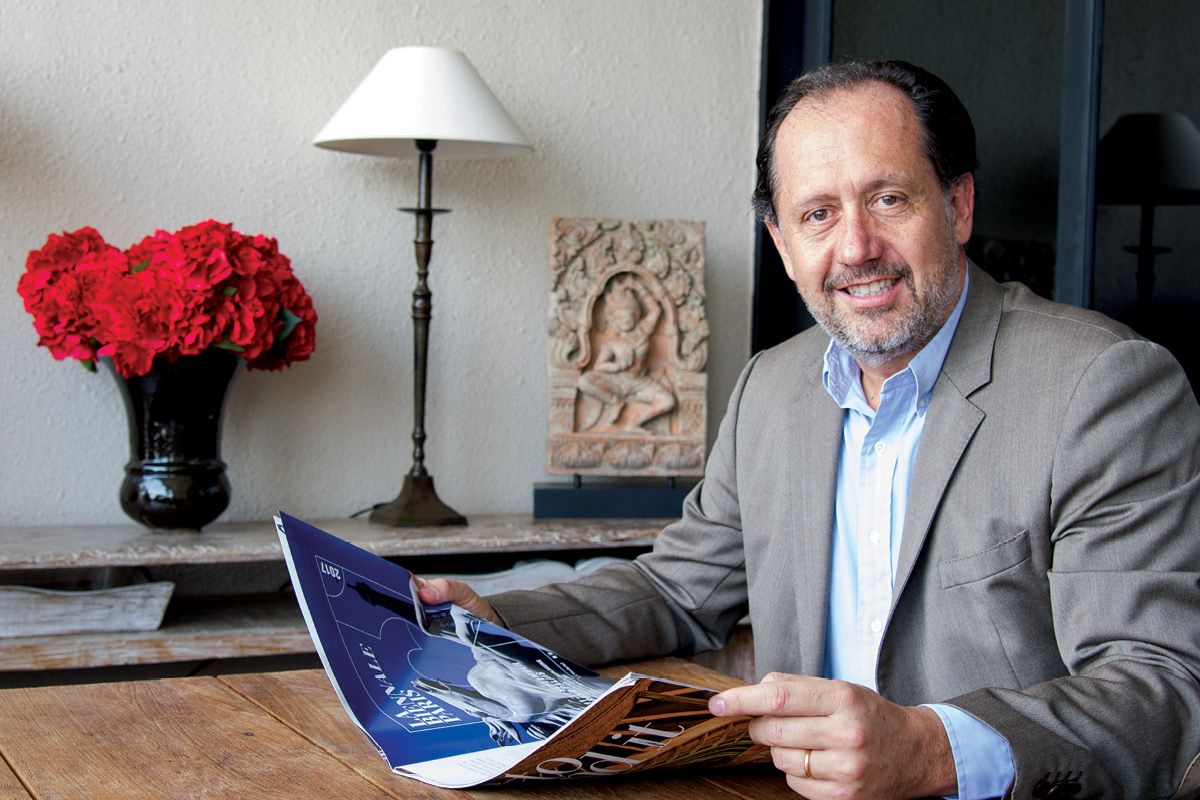According to STMicroelectronics (ST) Executive Vice-President for Asia–Pacific Jerome Roux, “Everybody is talking about IoT.” And it’s not hard to see why. The Internet of Things (IoT) has exploded across the globe, with smartphones, smart manufacturing, smart homes and smart cities among the multitude of ‘connected things’ making their way into everyday life.
Present in Asia since 1969 and with 18,000 employees there today, Switzerland-headquartered ST develops semiconductor solutions for a wide range of electronic applications. “IoT represents a very broad market with diversified applications,” Jerome says.
“You have to understand that although there is an enormous difference between a robot and, say, a wearable bracelet that monitors your heartbeat when you walk, there is a lot of commonality in terms of types of functionality: efficient processing, sensing, power management, security and connectivity. ST can offer all of these key building blocks in the different flavours needed for various end devices.”
Jerome Roux’s journey into leadership
Jerome has been involved in the semiconductor industry throughout his career. In 1988, he worked in the planning department at SGS Thomson (ST’s name prior to 1998), before taking up a marketing manager position at one of the company’s manufacturing facilities in Morocco. Jerome then worked in the same role in Singapore and Shanghai.
After spending three years at another company, he returned to ST in 2006, where he was promoted to executive vice-president for Asia–Pacific in July 2017. ST’s other main area of strategic focus is what it calls Smart Driving – the process towards “safer, greener and more connected vehicles”.
As the automotive industry is transformed by the shift from mechanical systems to digital systems and electric vehicles are on the rise, innovation is being brought to new car platforms mostly through semiconductors and software.
“In this faster-paced environment, we are supporting automotive suppliers and car makers with key technology for vehicles to progress from assisted to autonomous driving, as well as enabling major performance improvements for electric vehicles. For instance, electric vehicles are very successful in Hong Kong,” Jerome continues, highlighting that in some premium vehicles ST provides as much as US$1,000 worth of silicon per vehicle.
ST invests heavily in research and development and has more than 7,500 employees working in R&D. “In our industry, R&D investment is key to being able to supply our customers with the very latest innovations,” Jerome says. “To deliver new technology, we also need to adapt our manufacturing tools to keep pace with innovation in semiconductor processes.”
Jerome Roux’s top tips for a successful business strategy:
-
Vision:
“You have to set a vision, and it needs to be supported by clear, achievable and measurable goals.”
-
Relationship drives performance
“Proximity to customers and business partners is key. You cannot only look at what is happening from 10,000 miles away. You have to meet with your customers and suppliers at their site to better understand and build stronger relationships.”
-
Building a well-organised team
“Once the vision is defined and the goals are set, you need a team. The team should be committed to the goals, able to think out of the box, and trained to excel in execution.”
To broaden the ecosystem around its products and make development easier for its customers, ST launched its Partner Program in 2017 to enhance collaboration with third-party companies. The program allows customers to find partners in technical, marketing or business arenas to support their product design projects. “This was done in particular with small- and medium-sized enterprises in mind to make more skills available to them in the development of their products and services,” Jerome explains.
He also talks about how the company anticipates change and adapts to the market. “To do this, you have to partner with the market leaders as well as the potential disrupters,” he says. “We have to collaborate with start-ups as well as larger companies. This gives us a good idea of the trends driving the markets and the core technologies that are likely to emerge in the near future.”
You have to partner with the market leaders as well as the potential disrupters.
Another important point is the local ecosystem. “We have to work closely with the regional ecosystem, including distributors, authorities and universities,” Jerome continues. “This brings in all the information we need to be able to anticipate customer needs with new or improved products.”
The final point Jerome emphasises is enabling companies to bring out solutions fast. “Our approach is to make it easier for our customers to start developing with our products, and then support them from the first prototype to the delivery of the end commercial product,” he concludes.

